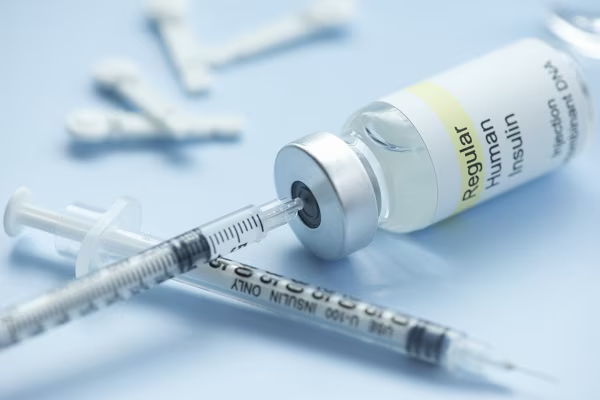Before the advancements of DNA technology, insulin was taken from the pancreas of different animals, mostly cows and pigs. Although this method provided a source of insulin, there were several drawbacks such as allergic reactions and its limited supply.
In the 1970s, scientists developed recombinant DNA technology, which allowed them to mass produce insulin using genetically modified bacteria. Human insulin is mainly produced in E. coli bacteria, this bacteria has several advantages including its high growth rate, high yield, and cost-effectiveness.
Scientists first remove a plasmid from the bacteria. A plasmid is a small loop of extra DNA that the bacteria has. A piece of a plasmid is cut out using restriction enzymes and the human insulin gene is inserted. The plasmid is re-inserted into the bacteria using transformation, where the bacteria absorb foreign DNA and incorporate it into their genome. Once inside, the insulin gene is transcribed into mRNA and then transformed into the insulin protein. The bacteria act as tiny factories, producing large amounts of insulin. The insulin must then be purified before it can be used.
Today, recombinant insulin is the primary form of insulin used to treat people with diabetes. With the use of recombinant DNA technology, scientists have overcome limitations with using animal insulin, creating a safer and more reliable source.
4/21/2024
Resources:
Baeshen, Nabih A, et al. “Cell Factories for Insulin Production – Microbial Cell Factories.” BioMed Central, BioMed Central, 2 Oct. 2014, microbialcellfactories.biomedcentral.com/articles/10.1186/s12934-014-0141-0.
“How Did They Make Insulin from Recombinant DNA?” U.S. National Library of Medicine, National Institutes of Health, www.nlm.nih.gov/exhibition/fromdnatobeer/exhibition-interactive/recombinant-DNA/recombinant-dna-technology-alternative.html. Accessed 21 Apr. 2024.



